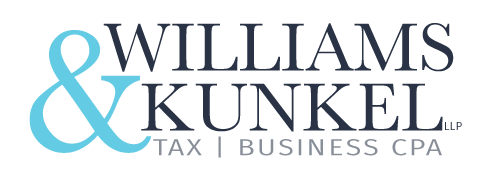For people nearing retirement or in retirement, every dollar counts and planning ahead is crucial. That’s especially true for taxes. (Flower Mound Tax Advice: Retirement Savings)
Now that 2018 tax returns are done and gone, this is an opportune time to look for 2019 tax savings strategies for retirement.
Here are two ways to do it:
Use your IRA to donate to charity
Have an individual retirement account (IRA)? If you’re 70½ or older, there’s a special way to use it to your tax advantage.
Because of the 2017 tax law and its larger standard deduction, it doesn’t make sense for most people to itemize. Under the old law, people would deduct their real estate taxes, state income taxes, mortgage interest and charitable contributions. The new law effectively eliminates, in most cases, those write-offs and replaces them with a larger standard deduction.
A great way to work around this, if you’re 70½ or older, is to use IRA funds for charitable contributions. You’re required to take a minimum of approximately 4% out of your IRA starting at age 70½ anyway. So, instead of writing checks to a charity from your personal checking account, donate the money from an IRA through a Qualified Charitable Distribution. You’ll not only help a cause you care about, you’ll receive a tax deduction for the contribution.
With a Qualified Charitable Distribution, the money you donate is excluded from your taxes, effectively preserving the charitable deduction.
If you haven’t retired yet and are younger than 70½, plan ahead to use this strategy when the time comes. Contribute to an IRA in 2019 so you can make charitable IRA contributions at 70½.
Leverage a donor-advised fund
If you’re below age 70½ and have a higher-than-average income, consider leveraging what’s known as a donor-advised fund to realize tax savings.
A donor-advised fund is a tax-advantaged charitable giving vehicle that can manage your charitable donations. You can claim a deduction for the amount you give the donor-advised fund. You don’t have to decide which charities will ultimately receive your money. If you give the donor-advised fund stock you own that has appreciated in value, you won’t owe any capital-gains taxes.
Here’s an example of how this tax move could work for a single person, who’d normally have a standard deduction of $12,200 for 2019. If you take, say, $50,000 and put it into a donor-advised fund this year, you can realize the full $50,000 deduction on your 2019 taxes.
To maximize savings with a donor-advised fund, consider using a bunching strategy. That means, you fund the donor-advised fund in one year and, in addition, pile all the itemized deductions you can into that year. Things like medical expenses, mortgage interest, real estate taxes and state income taxes. Then, you’ll surpass the standard deduction and itemize. Next year, take the standard deduction. The year after, put more into a donor-advised fund and max your itemized deductions again to claim them. And so on.
Since itemizing tax deductions every year doesn’t make sense any longer due to the higher standard deduction threshold, a bunching strategy will let you maintain a steady stream of charitable giving while realizing significant tax savings.
Call Williams & Kunkel CPA today in Flower Mound at 972-446-1040 to have a chat and find out how you can save money on your taxes as a real estate professional.
In addition, you can connect with us to receive updates throughout the business week by following us on Twitter or LinkedIn or liking us on Facebook.
Source: Marketwatch

